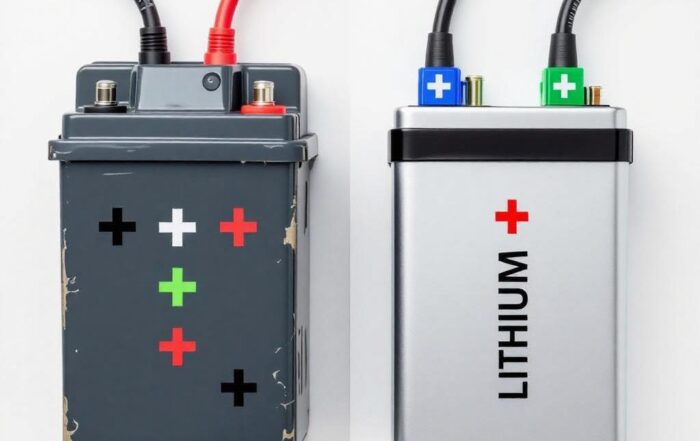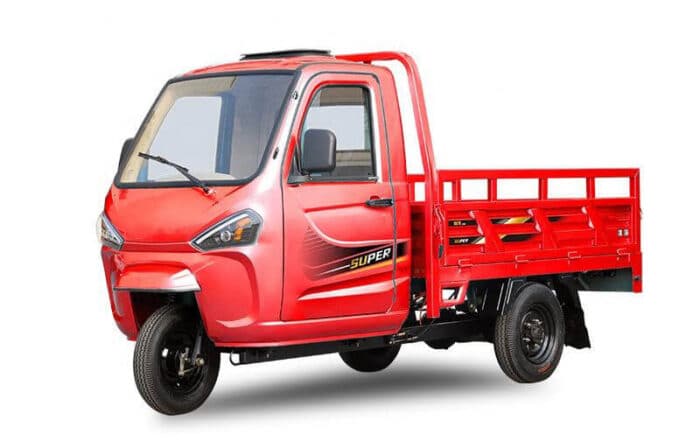Urban Commuting Made Easy: Fully Enclosed Electric Three-Wheeler
Meta Description:
Urban Commuting Made Easy: Fully Enclosed Electric Three-Wheeler is changing the face of city travel. Discover how these innovative vehicles offer comfort, safety, and zero emissions for the modern commuter.
Introduction to Urban Commuting Challenges
Urban life has many perks, but daily commuting isn’t one of them. From bumper-to-bumper traffic to sudden downpours and pollution-filled air, city travel is often more stressful than productive. Commuters are increasingly on the lookout for reliable, efficient, and eco-friendly alternatives. That’s where the fully enclosed electric three-wheeler comes into play—an innovative solution aimed at transforming the way we move through our cities.

Fully enclosed electric three-wheeler in an urban setting
What Is a Fully Enclosed Electric Three-Wheeler?
A fully enclosed electric three-wheeler is a compact, three-wheeled electric vehicle featuring a sealed cabin. Unlike traditional open trikes or motorcycles, these vehicles offer full protection from weather elements, enhanced safety features, and better comfort. Equipped with an electric drivetrain, they are designed for short to mid-range urban commutes while maintaining a low environmental impact.
Key Features of Enclosed Electric Three-Wheelers
These vehicles aren’t just quirky; they’re thoughtfully engineered with features like:
-
Weatherproof Cabin: Keeps riders dry and warm, regardless of rain or snow.
-
Electric Powertrain: Offers smooth, emission-free travel with minimal noise.
-
Cargo and Passenger Capacity: Space-efficient yet roomy enough for groceries or a second passenger.
Modern designs also include LED lighting, USB charging ports, and even Bluetooth-enabled infotainment systems.
Environmental Benefits
Fully enclosed electric three-wheelers are a game-changer for cities trying to cut emissions. Here’s why:
-
Zero Tailpipe Emissions: Perfect for meeting urban emission reduction goals.
-
Low Energy Consumption: They consume less electricity than larger EVs.
-
Noise Pollution Reduction: The near-silent electric motors contribute to quieter streets.
These benefits align perfectly with sustainable urban planning initiatives around the world.
Safety Advantages Over Traditional Bikes
Safety is a key selling point. Traditional two-wheelers expose riders to accidents and harsh weather. In contrast:
-
Enclosed Frame: Offers a protective shell in case of collisions.
-
Stability: The three-wheel design is inherently more stable.
-
Integrated Safety Gear: Many models come with airbags, ABS brakes, and seatbelts.
Riders feel more confident, especially when traveling on wet or slippery roads.
Technological Advancements
Don’t let their size fool you—these are smart vehicles:
-
Digital Dashboards: Offer real-time data on speed, battery level, and navigation.
-
App Connectivity: Many models sync with mobile apps for remote control and diagnostics.
-
Regenerative Braking: Recovers energy during braking to extend battery life.
Such innovations put these three-wheelers on par with high-end electric cars.
Economic Benefits for Daily Commuters
Switching to a fully enclosed electric three-wheeler can save you thousands:
-
Fuel Savings: Electricity is cheaper than gas.
-
Maintenance: Fewer moving parts mean fewer repairs.
-
Insurance: Lower premiums due to reduced risk and size.
Over a year, the total cost of ownership is significantly lower compared to cars.
Design and Comfort Features
Modern enclosed trikes don’t compromise on comfort:
-
Ergonomic Seating: Designed for long rides without fatigue.
-
Climate Control: Some models offer built-in heaters or fans.
-
Cabin Insulation: Keeps the ride quiet and pleasant, even in traffic.
Whether you’re commuting to work or running errands, the ride feels premium.
Urban Infrastructure Compatibility
These vehicles are built for cities:
-
Compact Size: Easily fits into tight parking spots.
-
Agile Handling: Navigates through traffic better than cars.
-
Charging Options: Compatible with most city charging networks.
Urban planners love them, and so will you.
Popular Models on the Market
Several manufacturers are redefining what it means to commute in style and efficiency with their enclosed electric three-wheelers. Here are a few standout models:
-
Arcimoto FUV (Fun Utility Vehicle): With a top speed of 75 mph and a range of over 100 miles, this model emphasizes fun and function in equal measure. It’s fully enclosed with an optional door package.
-
Aptera: Technically a three-wheeler, Aptera boasts solar-powered travel, an aerodynamic design, and luxury-grade interiors.
-
Electra Meccanica Solo: A single-passenger vehicle perfect for solo commuters looking for a mix of performance and convenience.
Each model has unique strengths—some are optimized for speed, others for sustainability or affordability.
User Experiences and Reviews
Real-world feedback paints a glowing picture of these compact powerhouses. Commuters frequently report:
-
Reduced Travel Stress: The compact size and agility make navigating traffic less of a headache.
-
Increased Comfort: Riders appreciate being sheltered from the elements without giving up the two-wheeler flexibility.
-
Financial Relief: Owners report slashing fuel and parking costs by over 70%.
Some even describe the experience as “liberating” and “the future of city commuting.”
Government Incentives and Rebates
Governments across the globe are offering attractive incentives to boost electric vehicle adoption:
-
Federal Tax Credits (U.S.): Up to $7,500 for eligible electric three-wheelers.
-
Local Subsidies: Cities like San Francisco and Toronto offer additional rebates and priority lane access.
-
Free or Discounted Parking: Many urban centers provide reduced-rate or free parking for electric vehicles.
Always check your local EV policies, as they can significantly reduce upfront costs.
Charging and Battery Life
Most enclosed electric three-wheelers come with lithium-ion batteries and offer practical charging options:
-
Home Charging: Plug into a standard outlet or install a Level 2 charger for faster charging.
-
Public Infrastructure: Compatible with most EV stations available across cities.
-
Battery Range: Typically ranges from 50 to 150 miles per charge, depending on the model and terrain.
Battery life spans several years, with many models offering warranties that ensure peace of mind.
Potential Drawbacks and Limitations
While these vehicles shine in many areas, it’s essential to consider:
-
Limited Speed: Most models max out around 70 mph, which might not suit highway commuters.
-
Range Anxiety: For those with longer commutes, frequent recharging could be an issue.
-
Availability: Not all models are widely available yet, and service networks are still expanding.
Despite these, the trade-offs are often worth it for city dwellers seeking efficiency.
Who Should Consider Buying One?
These vehicles are a fantastic fit for:
-
Urban Commuters: Perfect for weaving through traffic and parking in tight spots.
-
Eco-Warriors: Ideal for those wanting to minimize their carbon footprint.
-
Delivery Businesses: Small cargo space and efficient navigation make them a great choice for urban deliveries.
They cater to both personal and commercial uses, offering unmatched urban versatility.
Future Outlook and Market Trends
The demand for compact EVs is on the rise, and enclosed electric three-wheelers are poised to become a central part of that movement:
-
Material Innovations: Lightweight yet durable composites are making vehicles even more efficient.
-
AI Integration: Future models may feature autopilot capabilities and smart traffic navigation.
-
Urban Integration: City planners are incorporating dedicated lanes and charging hubs for compact EVs.
The market is set to grow exponentially as cities shift toward sustainable mobility.
Conclusion: Is It Time to Make the Switch?
The fully enclosed electric three-wheeler isn’t just a quirky concept—it’s a viable, cost-effective, and eco-friendly solution for modern urban commuting. With innovations in safety, comfort, and tech, these vehicles tick nearly every box for the city dweller. Whether you’re tired of traffic, concerned about emissions, or simply looking for a smarter way to get around, this could be your ticket to a better commute.
FAQs
1. Are fully enclosed electric three-wheelers safe?
Yes, many models include seatbelts, roll cages, and stability features that make them safer than two-wheel scooters or motorcycles.
2. Do I need a special license to drive one?
Regulations vary by country and state. Some models require a motorcycle license, while others only need a standard driver’s license.
3. How long does it take to charge the battery?
Depending on the charger, it takes 4–8 hours for a full charge. Fast chargers may reduce this time significantly.
4. Can they be used during winter or rainy seasons?
Absolutely. Their fully enclosed design protects from rain, snow, and wind, making them all-weather friendly.
5. What is the lifespan of a three-wheeler battery?
Most batteries last 5–8 years, depending on usage and charging habits.
6. Are they allowed on highways?
Some models can handle highway speeds, but it’s best to check local laws and the vehicle’s specifications.





